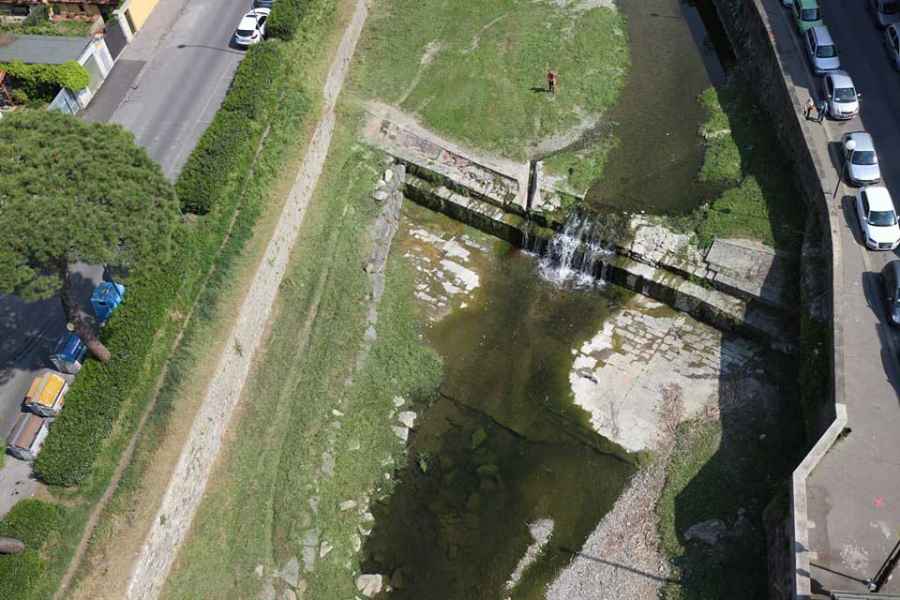The Mugnone is one of the most important waterways which cross the Florentine plain and its course has followed the evolution and expansion of the city over time. The stream rises near Pratolino and the park of the same name and flows through narrow valleys and fascinating sites to reach the Florentine plain.
In Roman times the Mugnone flowed alongside the city wall on the western side and thus took on a defensive role which continued during the medieval period when its course was modified with the expansion of the city and the consequent construction of a new ring of walls. In 1330, at the point of the Church of San Marco Vecchio, the course of the Mugnone was changed in order to make a defensive moat for a stretch of the city walls which ran from Porta a Pinti, Porta San Gallo and Porta a Faenza and from there to the Arno.
In 1529, during the siege of Florence, the course of the Mugnone was orientated from Porta a Pinti towards Porta alla Croce but it soon returned to its preceeding course. With the construction of the Fortezza di S. Giovanni Battista (or da Basso) the moat was deviated yet again towards San Donato where it flowed into the River Rifredi (now Terzolle).
In the same period the Macinante channel (or Gora bandita or Fosso bandito) was made to pass beneath the Mugnone with a canal siphon which is still in function.
The confluence of the Mugnone and Arno is marked by the Indiano monument located at the east end of the Parco delle Cascine: Leonardo made a penetrating observation on the meeting of the two rivers: “The more acute the angle between the conjunction of the lesser river with the major river, the more the major river will keep to its course” (Leicester Codex c. 18v).

The Mugnone
Texts by
Daniele Vergari / English translation by Nina Brown
Related resources
Gallery
Related resources
Gallery












